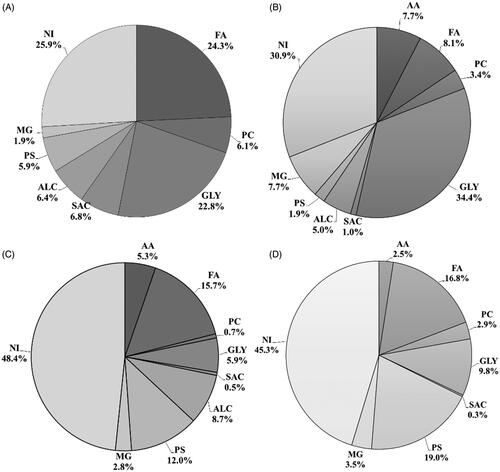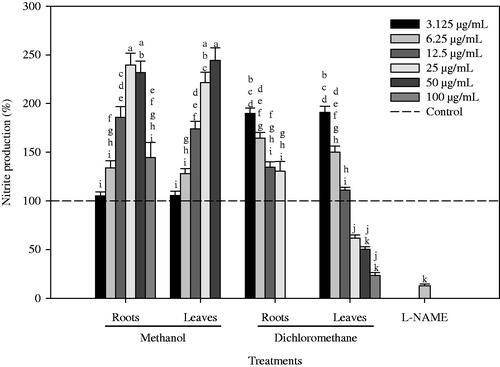Figures & data
Figure 1. Main chemical compound classes identified by GC/MS in the dichloromethane and methanol extracts of roots and leaves of P. maritimum. (A) Methanol leaf extract; (B) Methanol root extract; (C) Dichloromethane leaf extract; and (D) Dichloromethane root extract. AA: alkanes and alkenes; FA: fatty acids; PC: phenolic compounds; GLY: acylglycerols; SAC: saccharides; ALC: alcohols; PS: phytosterols; MG: minor groups; NI: non-identified compounds.

Table 1. Phytochemical composition of the methanol and dichloromethane extracts of P. maritimum leaves and roots, determined by GC/MS analysis.
Table 2. Radical scavenging activity (RSA) on DPPH, ABTS and NO radicals, metal chelating activity on iron (ICA) and copper (CCA) and ferric reducing activity (FRAP) activity of methanol (MeOH) and dichloromethane (DCM) extracts of roots and leaves of P. maritimum.
Figure 2. Effect of the application of dichloromethane and methanol extracts of roots and leaves of P. maritimum on NO production (%) by LPS-stimulated macrophages. Control cells were treated with culture medium supplemented with 0.5% DMSO and 100 ng/mL of LPS. l-NAME (positive control) was applied at the concentration of 100 μg/mL. Solid and errors bars represent the average and SEM, respectively (n = 9). Bars followed by different letters are significantly different according to the Duncan’s multiple ranges test (p < 0.05).

Table 3. Inhibitory activity of dichloromethane and methanol extracts of roots and leaves of P. maritimum on α-amylase, baker’s yeast α -glucosidase and rat’s intestinal α-glucosidase.
